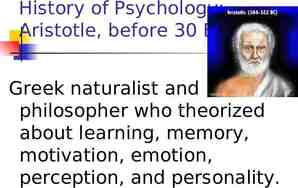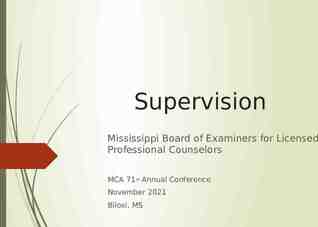The Alabama Alternate Program Alabama Alternate Achievement Standards
73 Slides6.99 MB

The Alabama Alternate Program Alabama Alternate Achievement Standards ACAP Alternate 1% Participation Dr. Elisabeth Davis Crystal Richardson Maggie Hicks Susan Goldthwaite Nannette Pence

WHY

USDOE- Letter May 16, 2017 Requirements for the Cap on the Percentage of Student who may be Assessed with an Alternate Assessment Aligned with Alternate Academic Achievement Standards

USDOE LETTER – MAY 16, 2017 General Provisions SEA must require LEA that assesses more than 1.0% of its assessed students in any subject with an AA-AAAs to submit information to SEA justifying the need to exceed the 1.0 threshold - Exceeding 1% Cap Justification Form SEA must provide appropriate oversight of EACH LEA that is required to submit such a justification

SEA Waiver Requirements of the 1.0% Cap on Participation on an AA-AAAS SEA may request the USDOE to waive the cap for that subject for 1 year Address any disproportionality in % of students in any subgroup taking AA Must include a plan AND timeline that outlines the following: o Take additional steps to support and provide oversight to EACH LEA that the state anticipates will exceed the 1.0% threshold o Include steps to ensure that ONLY students with most significant cognitive disabilities take an AA o Describe SEA process of monitoring & regularly evaluating each LEA to ensure that the LEA provides sufficient training such that school staff who participate in IEP teams understand and implement guidelines

STUDENT – IEP Profile Profile Component Information Strengths Completes all tasks STUDENT – IEP Profile Superb work habits Very conscientious about assigned work Attentive Participates in class discussion Mom states, “ is always eager to learn and is very helpful.” Parental Concerns Being able to catch up or get closer to grade level of achievement Being able to function independently as adult Student Security Guard Interests/Preferences Works well in small groups and enjoys discussions Likes choices Assessment Results AA (reading & math) Level IV Intelligence (IQ) – 83 Adaptive Behavior – 75 Achievement – 58 “.has been able to easily master the Alabama alternate standards.”

Academic Needs “Has demonstrated the ability to learn at a level that is close to same age peers” Below grade level in written expression & reading comprehension When independently reading a grade level or lower level text, struggles with some of the words and with comprehension Reading level – 4th grade level Reading Goal (R.ES.7.1) will be able to independently read a 5.0 level passage or text and answer comprehension questions including identifying topic sentence Development “.is close to a level consistent with same age peers” al & Can keep up with belongings and independently cares for self Functional Continues to struggle with behaviors in general education setting Needs Has made progress but continues to take responsibility and doesn’t like to be criticized Argues and makes excuses Has matured and takes redirection in appropriate manner most of the time Able to follow rules of conversational turn taking consistently in small group setting Enjoys interacting with others but continues to have difficulty providing relevant information and staying on topic sometimes Transportatio Regular Bus

DEFINITION OF A STUDENT WITH A SIGNIFICANT COGNITIVE DISABILITY 3 components of the definition 1. IQ score of 55 or below 2. Deficits in adaptive functioning 3. Understanding of the whole child

CHARACTERISITICS OF A STUDENT WITH THE MOST SIGNIFICANT COGNITIVE DISABILITY NATIONAL CENTER AND STATE COLLABORATIVE Disability Categories Intellectual Disabilities (45.2) Communication Pre-Symbolic (9.9) Evidence of receptive language (89.9) Autism (27.1) Multiple Disabilities (15.3) Symbolic or emerging symbolic (90.1) No or minimal response to sensory stimuli (11.1%) Classroom Setting Self contained classroom (64.4%) Self-contained with inclusion (15.1%)

CHARACTERISITICS OF A STUDENT WITH THE MOST SIGNIFICANT COGNITIVE DISABILITY NATIONAL CENTER AND STATE COLLABORATIVE Reading Skills reading basic sight words and simple sentences (40.1%) reading fluently with literal understanding (24.5%); reading fluently with critical understanding (3.3%) no observable awareness of text (16%) Math Skills counting by rote to 5 (8.6%) counting with 1:1 correspondence to at least 10 (26.2%) computing (46.4%) or computing to solve real-life or routine word problems (4.8%) no observable awareness or use of numbers (14%)

DETERMINING A STUDENT’S PARTICIPATION IN THE ALABAMA ALTERNATE ASSESSMENT PROGRAM THROUGH THE IEP PROCESS

Alabama Alternate Assessment Program Participation Decision Documentation February 2019

TRAINING FOR THE IEP TEAM MEMBERS A 4 STEP TRAINING PROCESS 1. REVIEW THE STUDENT CASE STUDY 2. CREATE A DATA ANALYSIS SNAPSHOT OF THE STUDENT 3. COMPLETE THE ALABAMA ALTERNATE ASSESSMENT PROGRAM PARTICIPATION DECISION DOCUMENTATION FORM 4. DISCUSS GUIDING QUESTIONS TO REFLECT ON THE IEP DECISION FOR ASSESSMENT PARTICIPATION FOR THE STUDENT.

STEP 1- CASE STUDY CASE STUDY DISABILITY LRE GRADE AGE AREA Monique Intellectual Self 7th 13 Disabilities contained

STEP 1 - CASE STUDY

STEP 2 – DATA ANALYSIS SNAPSHOT

STEP 3 – ALABAMA ALTERNATE ASSESSMENT PPROGRAM PARTICIPATION DECISION DOCUMENTATION FORM

Observations, teacher input, related service providers evaluations and input

Observations, teacher input, related service providers evaluations and input

IDEA AND ESSA Explanation to IEP Teams. A State (or in the case of a district-wide assessment, an LEA) must— (1) Provide to IEP teams a clear explanation of the differences between assessments based on grade-level academic achievement standards and those based on alternate academic achievement standards, including any effects of State and local policies on a student's education resulting from taking an alternate assessment aligned with alternate academic achievement standards, such as how participation in such assessments may delay or otherwise affect the student from completing the requirements for a regular high school diploma; and (2) Not preclude a student with the most significant cognitive disabilities who takes an alternate assessment aligned with alternate academic achievement standards from attempting to complete the requirements for a regular high school diploma.

IDEA AND ESSA (e) Inform parents. A State (or in the case of a district-wide assessment, an LEA) must ensure that parents of students selected to be assessed using an alternate assessment aligned with alternate academic achievement standards under the State's guidelines in paragraph (c)(1) of this section are informed, consistent with 34 CFR 200.2(e), that their child's achievement will be measured based on alternate academic achievement standards, and of how participation in such assessments may delay or otherwise affect the student from completing the requirements for a regular high school diploma.

ACTIVITY Using Mateo’s educational information, TURN AND TALK with a partner to complete STEP 2 – DATA ANALYSIS SNAPSHOT STEP 3 – ALABAMA ALTERNATE ASSESSMENT PROGRAM PARTICIPATION DECISION DOCUMENTATION FORM STEP 4 – GUIDING QUESTIONS

STEP 4 – GUIDING QUESTIONS 1.What were the determining factors that qualified this student for participation in the Alabama Alternate Assessment Program? 2.What were the determining factors that did not qualify this student for participation in the Alabama Alternate Assessment Program? 3.Discuss and document any practices you may change or initiate to ensure that student data is reviewed and appropriate determinations are being made.

ALTERNATE ACHIEVEMENT STANDARDS

LOCATED ON ALABAMA LEARNING EXCHANGE (ALEX)

COMING SOON. . . . . . TEACHING AND LEARNING GUIDES FOR ENGLISH LANGUAGE ARTS AND MATHEMATICS INSTRUCTIONAL STRATEGIES DOCUMENT AAS Resource Survey

General Courses of Study vs. Alternate Achievement Standards Which path is BEST for the student?

General Courses of Study Will the student benefit from being in the general education classroom? Is the student able to attend classes with minimal assistance? What types of accommodations can be put in place for the student to take the general assessment? Text-to-speech Extended time Breaks Scribe

Alternate Program Designed for students who need the most individualized instruction Conceptual – includes problems with skills in language, reading, writing, mathematics, reasoning, memory, knowledge retention Social - refers to issues with empathy, judgment, communication, making and keeping friends, and other social functions Practical – focuses on problems with self-care, such as personal hygiene, job duties, personal finance, organization

Alabama Student Assessment Program Alabama Comprehensive Assessment Program (ACAP) ACAP Summative ACAP Alternate ACCESS for ELLs Alternate ACCESS NAEP Pre ACT ACT with Writing WorkKeys Alabama Alternate Program Alabama Alternate Achievement Standards ACAP Alternate Alternate Model Performance Indicators (AMPIs) Alternate ACCESS

ACAP Alternate Grades and Subjects 2-3- ELA (Language and Reading) and Mathematics 4-8- ELA (Language, Reading, and Writing) and Mathematics 4, 6, & 8- Science 10- Reading, English, Mathematics and Science 11- Reading, English, Writing, Mathematics and Science Grade 12- WorkKeys- Optional Graphic Literacy, Workplace Documents, and Applied Mathematics Local Requirements (if there is a required local assessment at either the school or district level) Collect evidence for the specific subject and grade OR Create a test to assess the specific subject and grade

Alabama Alternate Achievement Standards The Alabama Alternate Achievement Standards (AAAS) were developed by committees of Alabama general and special education teachers to guide and direct instruction for students with the most significant cognitive disabilities. These standards guide our development of the assessment.

ACAP Alternate Design/Format Administered 1:1 (Test Administrator and Student) Paper Test- student booklet Web-based-online platform (answer document, Teacher Book) Test Administrator Manual (TAM) Administration Scheduling (individual needs) Breaks as needed Five answer choices (a, b, c, off topic, no response) Performance task items Manipulatives 10 Item Rule Accommodations Braille Communication device

ACAP Alternate Fall 2019 Regional Items Trainings- October Specifications Sample Items Manual Student Assessment Webpage- ACAP Alternate

English Learner with Significant Cognitive Disabilities Definition of an English Learner with Significant Cognitive Disabilities English learners with the most significant cognitive disabilities are defined as individuals who have one or more disabilities that significantly limit their intellectual functioning and adaptive behavior as documented in their Individual Education Programs, who required extensive direct individualized instruction and substantial supports to achieve measurable gains in the grade and age appropriate curriculum, and who are progressing toward English language proficiency in speaking, reading, writing, and understanding.

English Learner with Significant Cognitive Disabilities NEW FOR 2019-2020: Approval is required for any student who will be participating on the WIDA Alternate ACCESS for ELLs. Guidance for this new procedure will be available in the near future. Any Local Education Agency, who administers the WIDA Alternate ACCESS for ELLs assessment to a student who has not received approval, will be responsible for reimbursement to the Alabama State Department of Education.

English Learner with Significant Cognitive Disabilities Only ELLs with significant cognitive disabilities should take WIDA Alternate ACCESS for ELLs. Students demonstrating academic difficulties due to learning disabilities, speech-language impairments, and emotional-behavioral disabilities may not necessarily qualify for participation on WIDA Alternate ACCESS for ELLs, and may be better served by WIDA ACCESS for ELLs Online or Paper. The most appropriate assessment for each English learner student must be listed either in the student’s IEP or 504 plan. Students with disabilities who can be served with accommodations on the WIDA ACCESS for ELLs Online and Paper assessments should continue to participate in that assessment, NOT WIDA Alternate ACCESS for ELLs.

1% Threshold Students Students with the with MOST Disabiliti Significan es t Disabiliti es 100% ALL Student s

Justification Notification to LEAs that the ALSDE has been determined to be over the 1% participation on the AAA in any subject Letter to Superintendent Exceeding the 1% Cap Justification Form Must indicate how all persons who served on an IEP Team were trained on the AAA decision making process and participation guidelines Copies of guidance Explain WHY your LEA exceeds the 1% threshold Assurance Superintendent signs the form Submitted to ALSDE Student Assessment

USDOE Letter-May 16, 2019 Show the number and percentage of students in each subgroup who took or will take an alternate assessment. Subgroups: Male or Female Hispanic/Latin, White, Black or African American, American Indian, Asian, Native Hawaiian Non-English Learner or English Learner Poverty or Non-poverty Two or More Races Non-Migrant

SEA Waiver Requirements of the 1.0% Cap on Participation on an AA-AAAS “If a State request to extend a waiver for an additional year, it must demonstrate substantial progress towards achieving each component of the plan and timeline.”

Justificatio n Form Required for each LEA over the 1% Threshold

Highest and Lowest AASCD Rates (20152016) Highest State AASCD Rates Rates Michigan 2.32% Pennsylvania 1.89% Ohio 1.88% New York 1.81% Mississippi 1.76% Oklahoma 1.64% Massachusetts 1.64% South Dakota 1.52% Delaware 1.49% Minnesota 1.47% Lowest State AASCD Rates Rates Iowa 0.73% New Hampshire 0.85% New Mexico 0.86% South Carolina 0.89% Nevada 0.92% Maryland 0.94% Wyoming 0.99% Montana 1.01% North Carolina 1.01% California, Colorado, Hawaii, and Washington 1.02%

Bell Curve IQ Cumulative Percentages 75 5.0% 70 2.3% 65 1.0% 63 0.7% 55 0.1%

1% Threshold The total number of students assessed using an alternate assessment may not exceed 1% of the total number of students in the state who are assessed in a subject.

2018-2019 Calculation of Data Reading Total number of students who participated in reading on the Alabama Alternate Assessment in grades 3-8 and 10 Total number of students who participated in reading on Scantron grades 3-8 Total number of students who participated in reading on ACT with Writing grade 11 Total number of students who participated in reading on ACCESS and Alternate ACCESS in grades 3-8 and 10

2018-2019 Calculation of Data Math Total number of students who participated in mathematics on the Alabama Alternate Assessment in grades 3-8 and 10 Total number of students who participated in mathematics on Scantron grades 3-8 Total number of students who participated in mathematics on ACT with Writing grade 11

2018-2019 Calculation of Data Science Total number of students who participated in science on the Alabama Alternate Assessment in grades 5, 7 and 10. Total number of students who participated in science on Scantron in grades 5 and 7. Total number of students who participated in science on ACT with Writing grade 11.

Digging into the Alternate Data Gende r Grade Exceptionalit y Readin g Achieveme nt Math Achievement Science Achievement M 08 MD 514 1 540 3 M 07 ID 574 3 512 2 522 3 M 08 MD 514 1 534 2 F 04 ID 512 2 526 3 M 04 AUT 533 2 508 2 522 3 F 05 ID 496 2 500 2 488 2 F 06 SLI 528 3 521 2 M 05 SLD 547 3 521 2 508 3 F 06 MD 513 2 521 2 F 03 AUT 400 1 400 1 M 04 ID 600 4 600 4 F 08 AUT 600 4 600 4 M 07 OHI 600 4 600 4 600 4 M 07 SLD 568 3 568 4 600 4 M 03 ID 574 4 531 3 600 4

Digging into the Alternate Data Alabama AIM Alternate Assessment Data 2018-2019 Portal, DRC Insight Portal, or Data Center Copy of student raw scores Export Review the spreadsheet the data looking for possible red flags Disability Scores Achievement level Grade

Monitoring/Support Special Education Coordinator System Test Coordinator Superintendent Principals Teachers Discuss data Review IEPs Evaluations/documentation

Training November Regional 2019 sites Principals Special Ed Teachers Special Education Coordinator System Test Coordinator



























